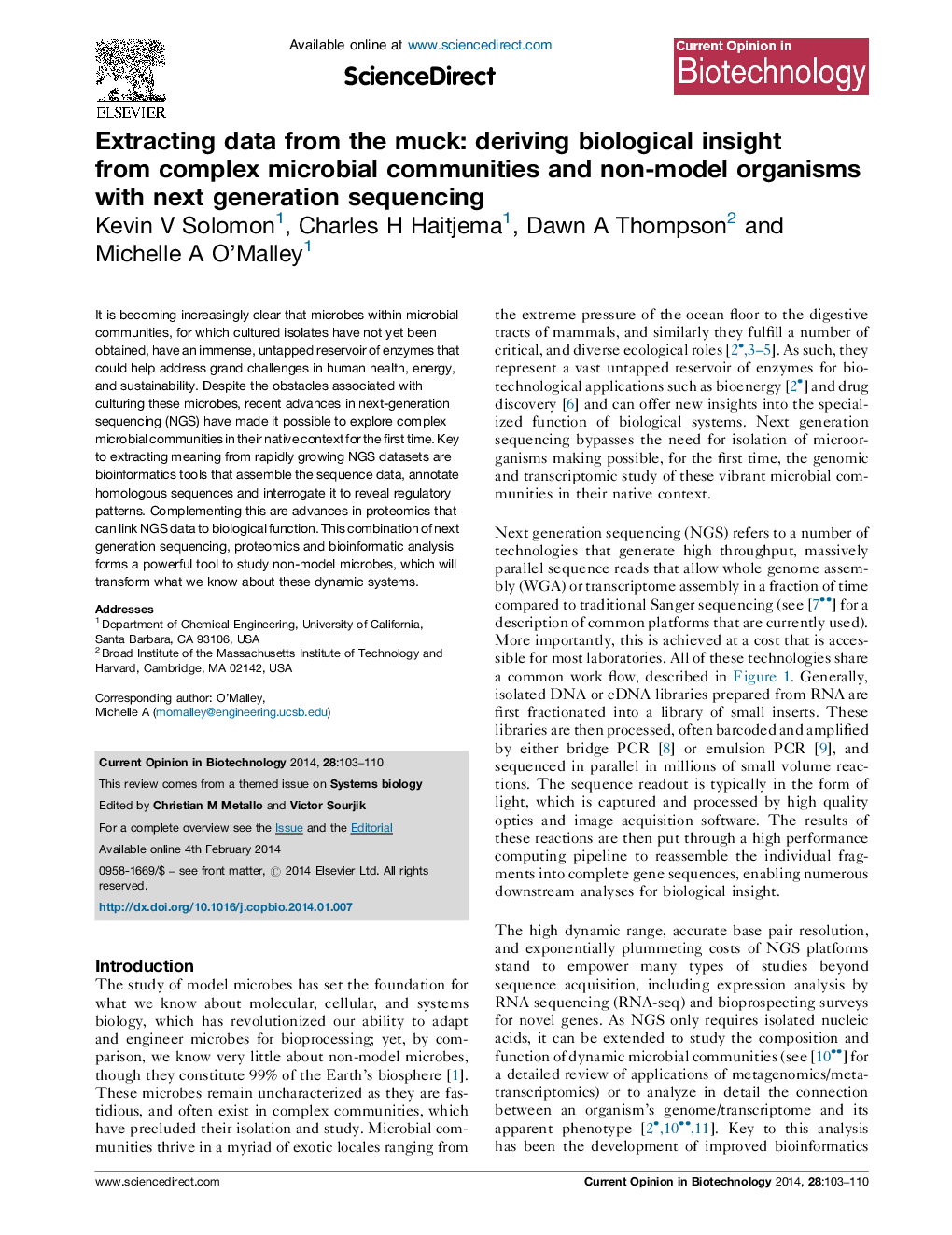| کد مقاله | کد نشریه | سال انتشار | مقاله انگلیسی | نسخه تمام متن |
|---|---|---|---|---|
| 15630 | 42462 | 2014 | 8 صفحه PDF | دانلود رایگان |
• NGS can be used to study microbial consortia and difficult to cultivate microbes.
• NGS can acquire raw sequence information and expression profiles (RNA-seq).
• Automated pipelines can accurately assemble and characterize genes and their regulation.
• Proteomics can validate NGS results and provide additional insight.
• Power of NGS is limited by the extent of biological databases and computational tools.
It is becoming increasingly clear that microbes within microbial communities, for which cultured isolates have not yet been obtained, have an immense, untapped reservoir of enzymes that could help address grand challenges in human health, energy, and sustainability. Despite the obstacles associated with culturing these microbes, recent advances in next-generation sequencing (NGS) have made it possible to explore complex microbial communities in their native context for the first time. Key to extracting meaning from rapidly growing NGS datasets are bioinformatics tools that assemble the sequence data, annotate homologous sequences and interrogate it to reveal regulatory patterns. Complementing this are advances in proteomics that can link NGS data to biological function. This combination of next generation sequencing, proteomics and bioinformatic analysis forms a powerful tool to study non-model microbes, which will transform what we know about these dynamic systems.
Figure optionsDownload high-quality image (148 K)Download as PowerPoint slide
Journal: Current Opinion in Biotechnology - Volume 28, August 2014, Pages 103–110
